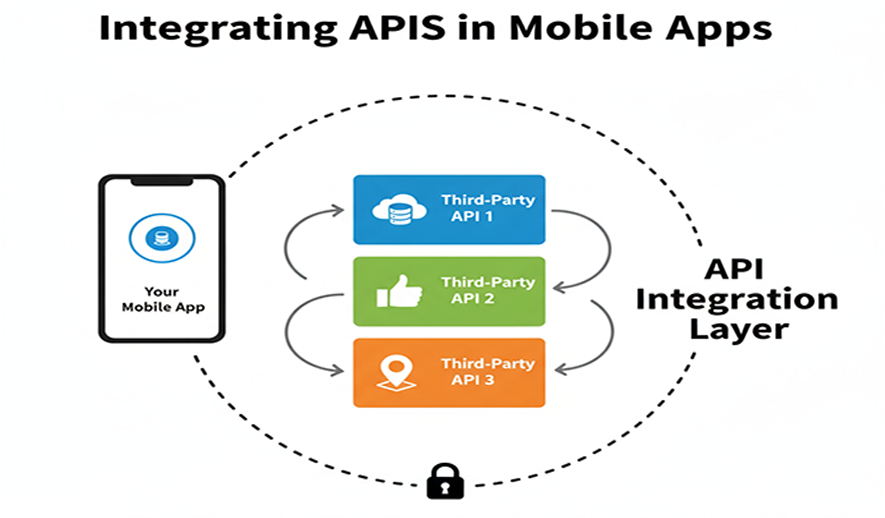
Integrating APIs in Mobile Apps
Integrating APIs in mobile apps is crucial for connecting to backend services, enhancing functionality, and providing a dynamic user experience. The process involves several key steps and best practices to ensure security, performance, and reliability.
The API integration process
- Define requirements and choose an API: Before starting, identify the specific functionality your app needs, such as user authentication, payment processing, or real-time data. Then, research and select an appropriate API, considering its documentation, performance, security, and long-term viability.
- Obtain API credentials: Many APIs require authentication using API keys, client IDs, or OAuth tokens to ensure secure access. You will typically register your app on the provider's developer portal to get these credentials.
- Use libraries and frameworks: To simplify the process of making API calls and parsing responses, use popular libraries. For Android, options include Retrofit and Volley. For iOS, URL Session and Alamofire are common choices.
- Make asynchronous API calls: Perform all network requests on a background thread to prevent the app's UI from freezing. Both Android (with Coroutines) and iOS have built-in support for asynchronous operations.
- Handle API responses: The server will send a response, usually in JSON format. You'll need to parse this data and use it to update the app's UI. The library you chose will often handle the conversion of JSON data into your app's data models.
- Implement error handling: Not all API calls will be successful. Your app must be able to gracefully handle network errors, server issues (e.g., 500 status codes), and invalid requests
Key best practices for API integration
- Prioritize security: Always use HTTPS to encrypt data in transit and protect sensitive information. Store API keys and other credentials securely, such as in the Android Keystore or iOS Keychain, rather than hardcoding them into your app.
- Optimize for performance: Minimize payload sizes by only fetching the data you need. Implement caching strategies to store frequently accessed data locally, reducing network requests and improving responsiveness.
- Manage offline mode: Design your app to work seamlessly even with poor or no internet connectivity. Utilize caching to provide a smooth user experience until a network connection is available.
- Handle rate limits: Be aware of and manage API rate limits to prevent your app from exceeding the number of allowed requests. You can implement a "retry with exponential backoff" strategy to handle temporary throttling.
- Test thoroughly: Rigorously test API integrations to ensure reliability and proper error handling. Tools like Postman or Insomnia can help test API endpoints during development.
